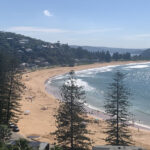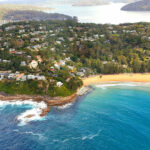CONTENTS
Governor Phillip Park
New Plan of Management (Priorities)
Urban Night Sky – Park now an Urban Night Sky Place
Barrenjoey Headland
Strategic Reference Group
Volunteers for The Lighthouse
Fishermen’s Cottages – history of the area
Crown Lands Review
Submission to NSW Government
Planning & Development
Council Motions on Public Meetings and How to Object to a DA
Short Term Rental Accommodation – the future
DAs
231 Whale Beach Road
‘The Joey’
173-175 Whale Beach Road
Traffic and Parking
Ticketless parking fines
Electric Vehicle Charging Station in Pittwater Park(S)
Environment
PEP 11
Dog Attack at North Palm Beach
Northern Beaches Council
Martin McCallum
Ocean Pools
Avalon Shared Space
Future of Consultation
PBWBA Committee
Membership – request for help
History Corner
Governor Arthur Phillip by Robert Mackinnon
Forthcoming Events
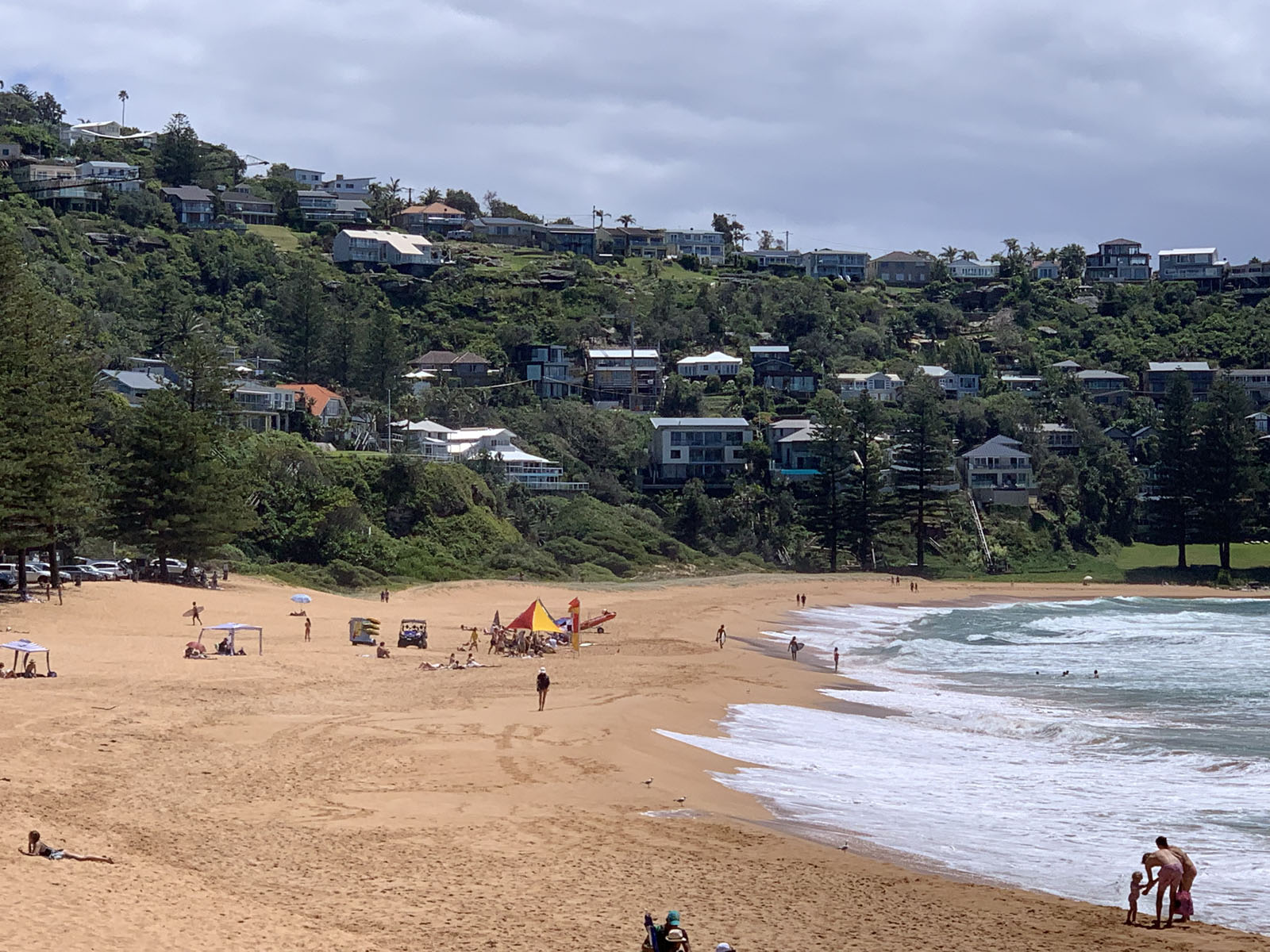
Whale Beach
GOVERNOR PHILLIP PARK
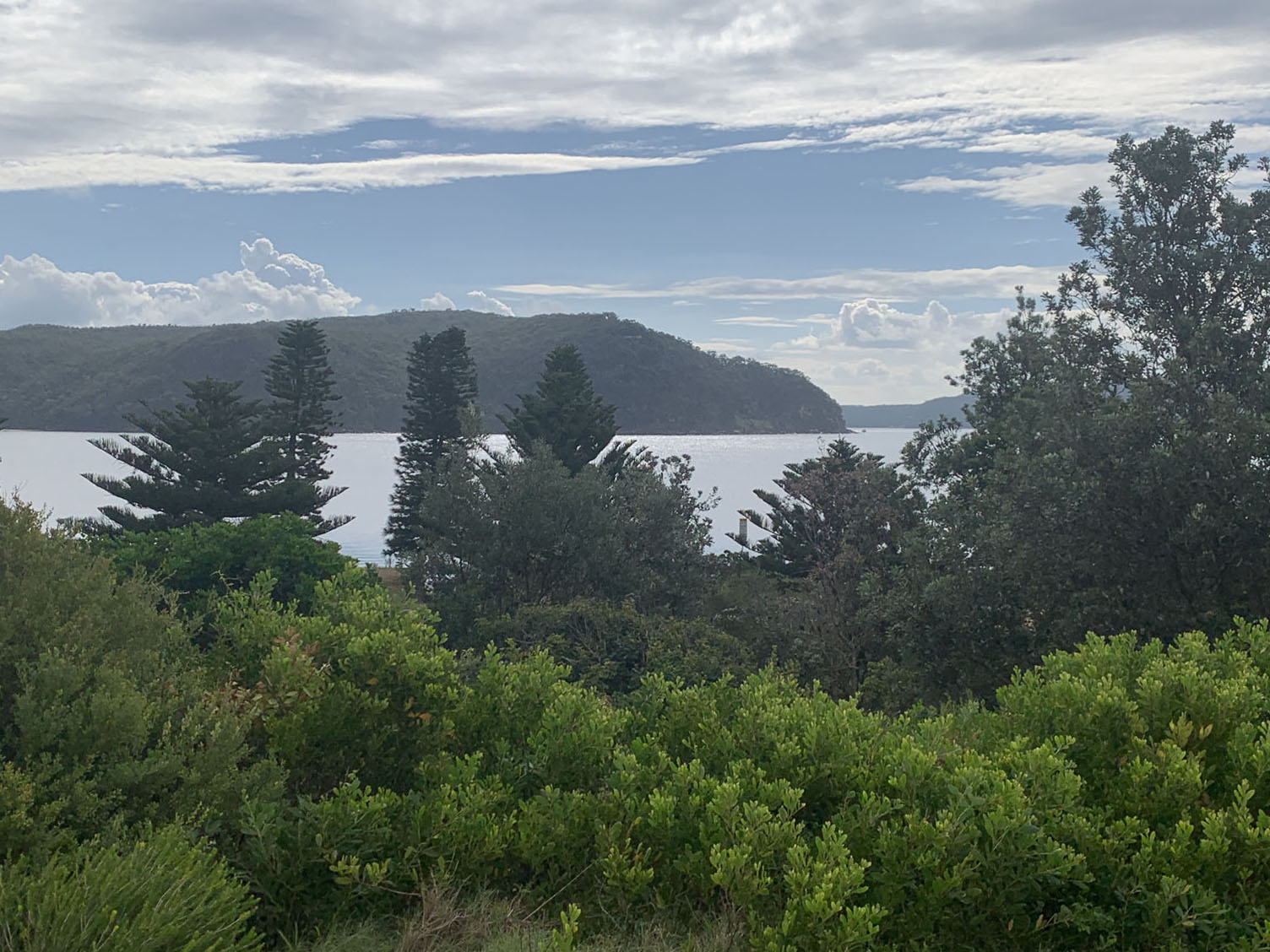
Governor Phillip Park
One of the most prized and appreciated recreation areas in Palm Beach is Governor Phillip Park. It consists of three Crown Reserves which have been reserved by the Crown for the express purpose of Public Recreation. They are managed by Northern Beaches Council. Adjoining the Park is Barrenjoey Headland which is managed by the National Parks and Wildlife Service as part of Ku-ring-gai Chase National Park. The Park is an iconic tourist attraction with regular local visitors and many others from all over Australia and overseas. The climb to Barrenjoey Lighthouse is regularly listed as one of Sydney’s top attractions. However, all these visitors, together with the regular filming of ‘Home and Away’, take a considerable toll on the Park. We have pressed the Council for many years for a complete upgrade. Money needs to be allocated for repairs, long-overdue maintenance and improvements to its amenities. This is now being planned and a new Plan of Management is currently being drafted to replace the 2002 Plan of Management prepared by Pittwater Council. Its key objective is to conserve and enhance the Park’s natural, historical and cultural environment while providing a diverse range of quality informal recreational opportunities. The current Plan includes a provision that PBWBA has to be consulted on the plans for the future management of the reserve. We have prepared and are adding to a list of the most important work to be carried out in the Park. What would you like to add? What would be on your wishlist? Please let us know by email to: info@pbwba.org.au
URBAN NIGHT SKY
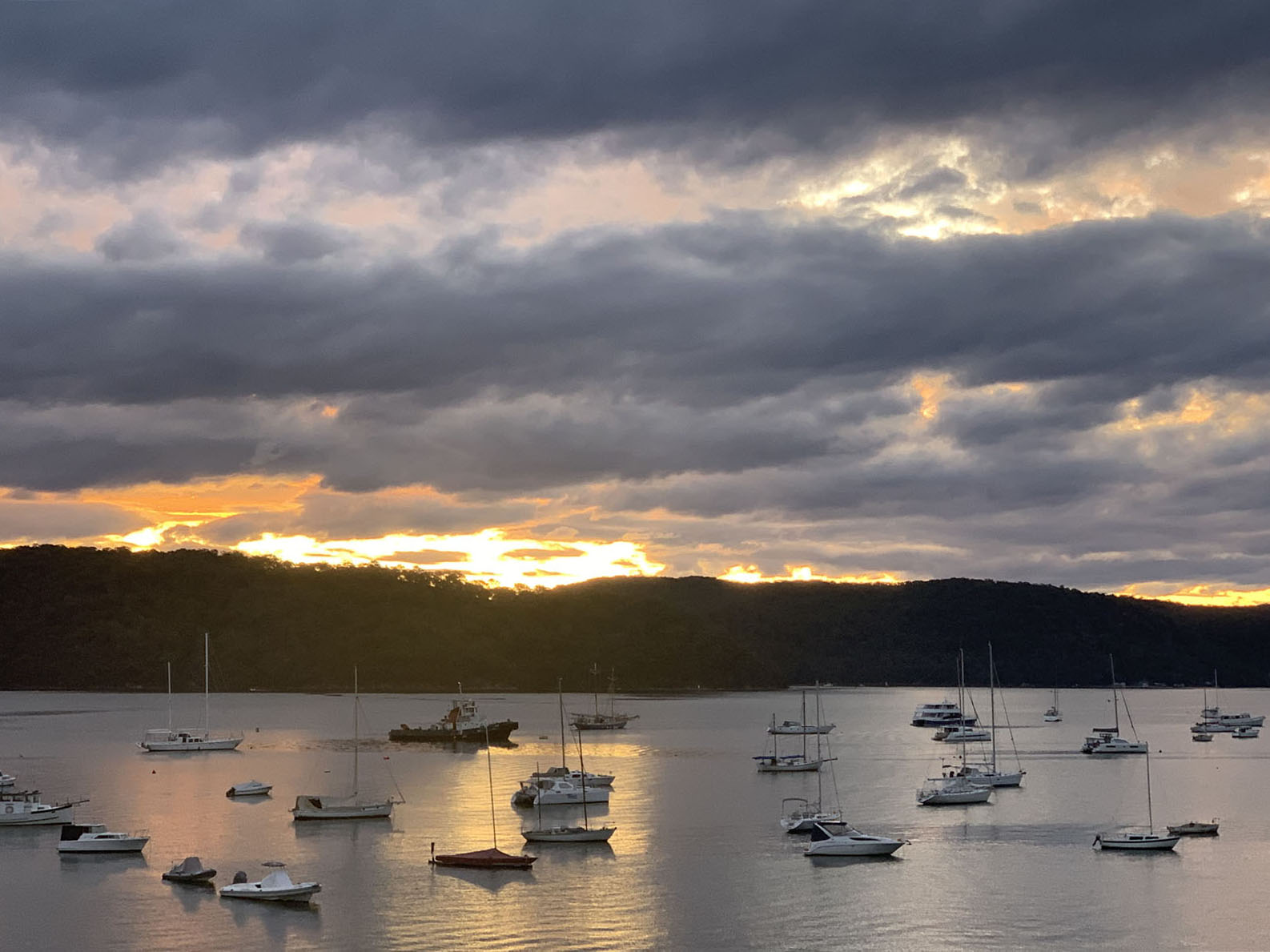
Night falls over Pittwater
The application to the International Dark Sky Association has been received positively and, when confirmed, Governor Phillip Park, including Barrenjoey Headland, will become an Urban Night Sky Place with the first Event held in forthcoming weeks. Within the Park it must be restricted to 50 people and there need to be 4 events a year although they do not all have to be in Governor Phillip Park. Safety of people at night in the Park and on the Headland is a major concern for the Association and this is the responsibility of the Council who will be organising the events.
BARRENJOEY HEADLAND
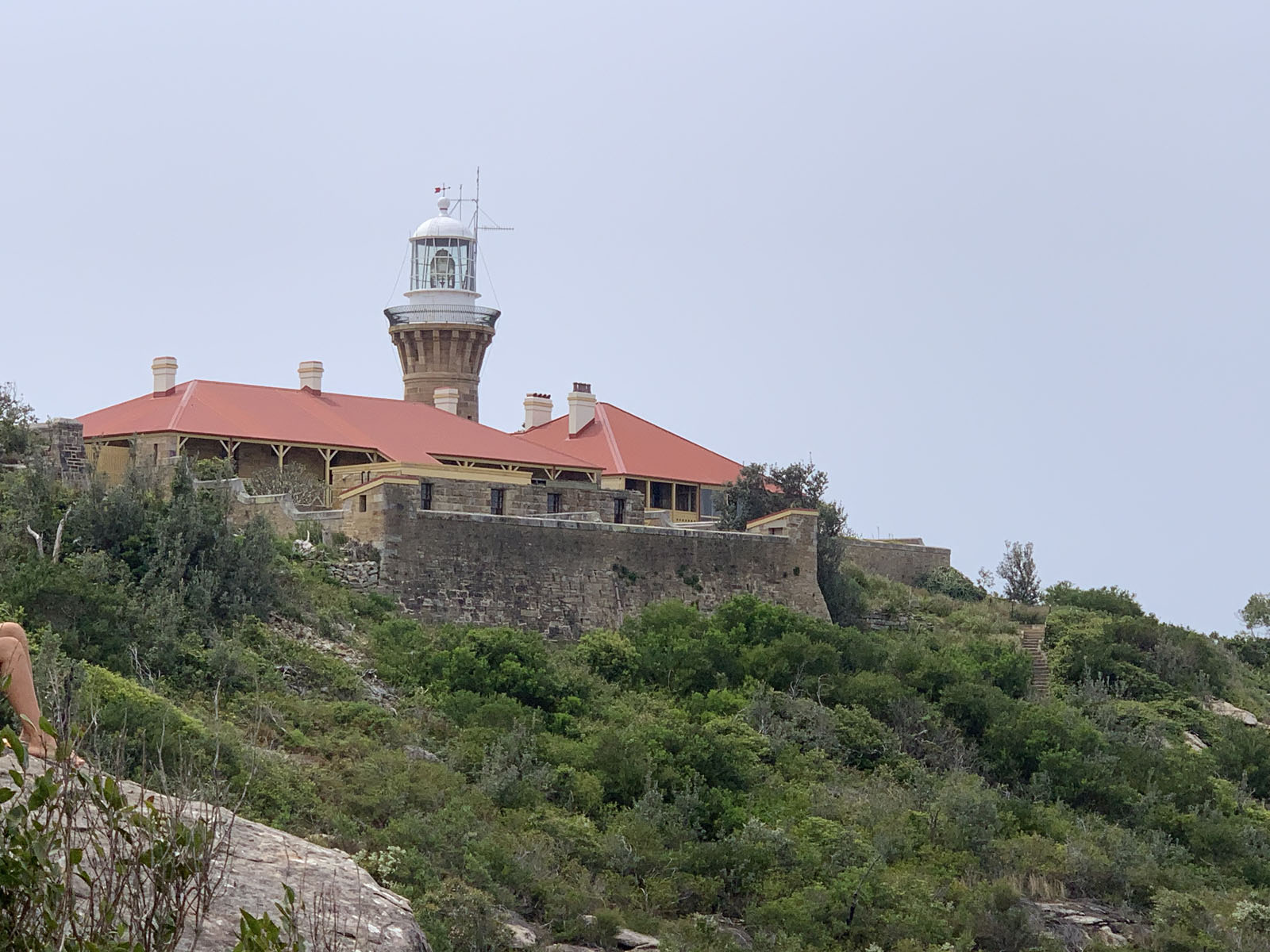
Barrenjoey Lighthouse
Since short-term commercial letting of the heritage buildings on Barrenjoey Headland has been ruled out we have received confirmation from Deon van Rensburg, Director, Greater Sydney, National Parks and Wildlife Service that the NPWS recognises the importance of interpretation of the site and will continue to implement and update its strategy for this. To examine the options for reuse of the buildings NPWS will establish a Stakeholder Reference Group and the Association will be invited to participate. NPWS state that since they took responsibility for the buildings they have carried out significant repairs and these will continue as funding permits. In 2022/23, 215,385 people visited the Headland and 2,000 people took a guided tour. Tours are available on Sundays from 11 am to 3 pm.
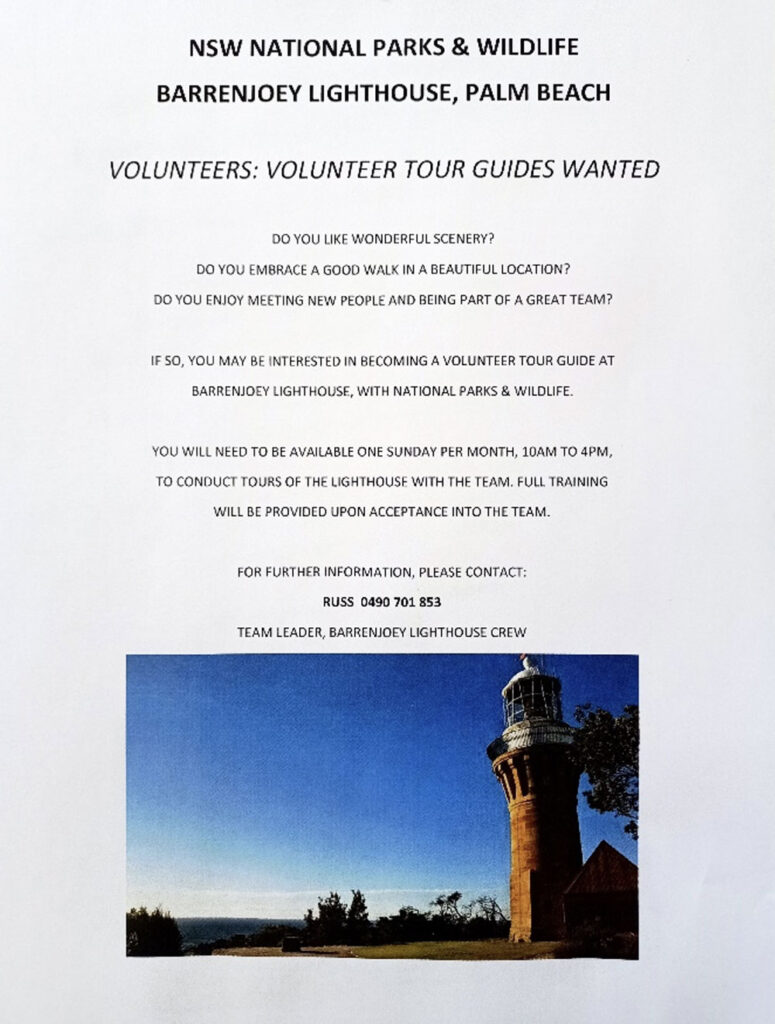
Would anyone like to be a Volunteer Guide at The Lighthouse?
FISHERMEN’S COTTAGES
As reported in last month’s Newsletter, submissions were invited following the NPWS application to the Heritage Council of NSW to demolish the two former fishermen’s cottages on Barrenjoey Headland. We feel that since both cottages are in a very poor state of repair and possibly contain asbestos we do not object to their demolition. However, because of the historical significance of the site, there should be a plaque (or similar) to record some of the local history and pay tribute to Bowen Bungaree (son of the great Indigenous explorer Bungaree from the Darug people of Broken Bay) who lived nearby in the 1840s and, whilst ostensibly a fisherman, helped John Broadley Howard, the ‘Coast Waiter’ track down contraband and illicit stills. As a Police Tracker he carried a gun which he used to hunt the bush-ranger Casey. Later these cottages and indeed Governor Phillip Park were used during the Great Depression by jobless people who had to ‘make do’ as best they could.
CROWN LANDS MANAGEMENT ACT REVIEW
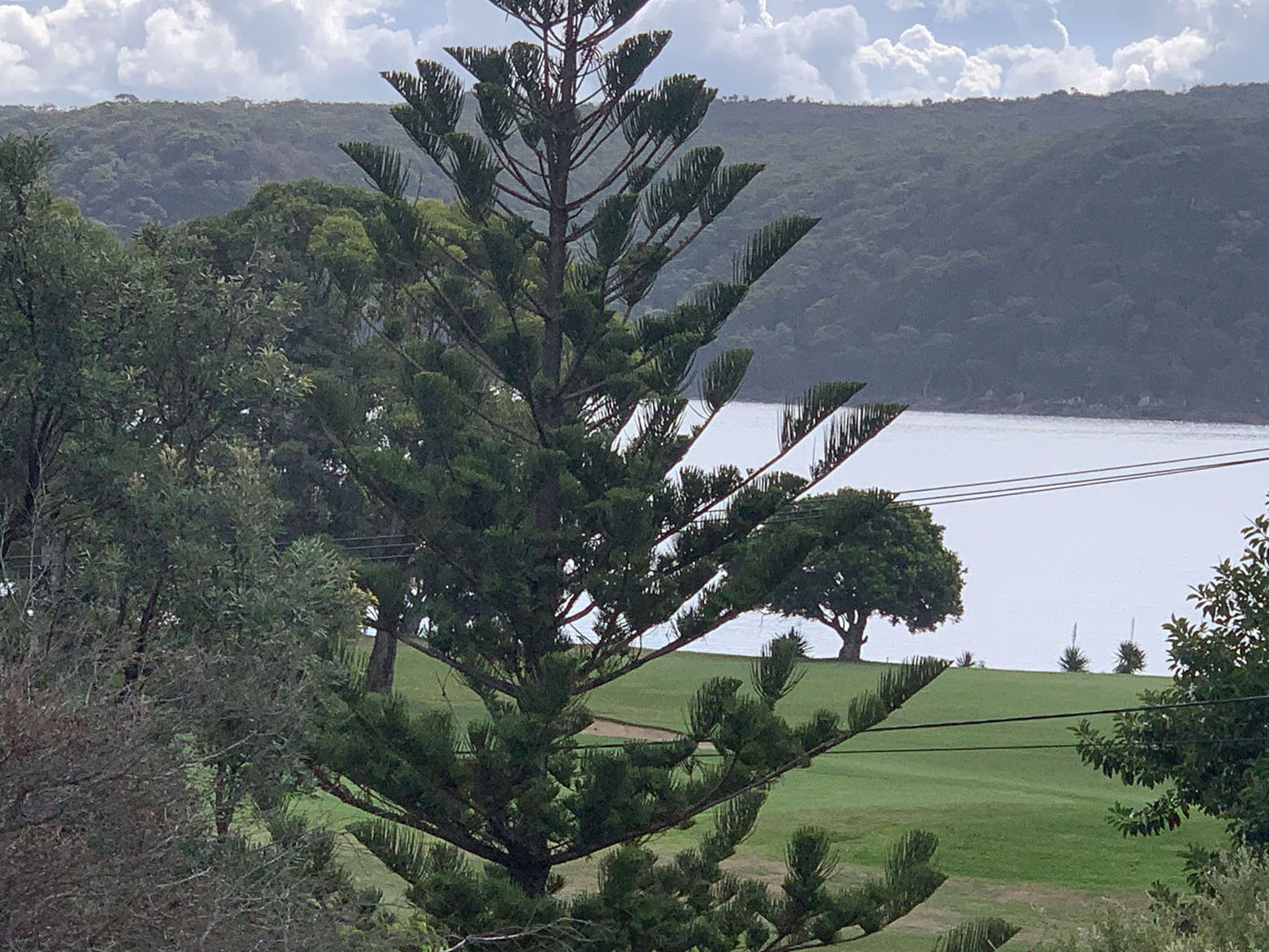
Governor Phillip Park
The New South Wales Government is conducting a 5-year statutory review of the Crown Land Management Act 2016 to understand how well the Act is working and identify reforms that could strengthen and improve management of the Crown estate. PBWBA has made a submission to this Review and this is on our website.
PLANNING AND DEVELOPMENT
PLANNING
The State Government’s proposed Planning Reforms are complex and require explanation. We have been aware that members do not feel that the Council has been proactive enough in disseminating this information for example through Public Meetings. There have been briefings to small groups but there are still many residents who are not aware of the details and their possible ramifications.
Councillor Vincent de Luca has lodged two Notices of Motion for the next Council meeting.
That this Council resolves to:
1. Conduct public education meetings (one for each Ward) on the current proposals by the State Government to create increased housing development;
At such meetings provide contact details for the Premier, Minister for Planning, Leader of the Opposition, Cross Bench MPs and points for residents to raise in written submissions that reflect Council’s endorsed submission;
2. Advertise such meetings through Media Releases, Council’s online Newsletter, email database, contacting registered community groups and placing posters at all Community Centres and libraries; and
3. Request Council’s CEO to provide Council’s Planning staff to attend such meetings, outline the proposals and answer any questions;
4. Write to all Leaders of Parties in the NSW Legislative Council requesting they take action to establish an Inquiry into the State Government’s proposals and also write to all local State MPs asking them to make representations likewise.
and the second Notice of Motion from Vincent de Luca is on ‘How to Object to a DA’
That this Council:
1. Notes that some Councils provide information on their website and in Notifications of DAs on how to object to a DA
2. Places on its website information on how to object to a DA and reasons that may be cited pursuant to the Environmental Planning and Assessment Act and planning instruments
3. The CEO be requested to report to Council within two months whether it is feasible to place in all Notifications of Development Applications general information on how to object to a DA and whether there would be any cost or resource impact in placing such information in Notifications of Development Applications.
These Motions will be debated at the next Council Meeting which can be followed live online on: https://www.northernbeaches.nsw.gov.au/council/meetings
The Agenda for the next Council Meeting on Tuesday, 26 March is: https://northernbeaches.infocouncil.biz/Open/2024/03/OC_26032024_AGN_2397_AT.PDF
Short term Rental Accommodation
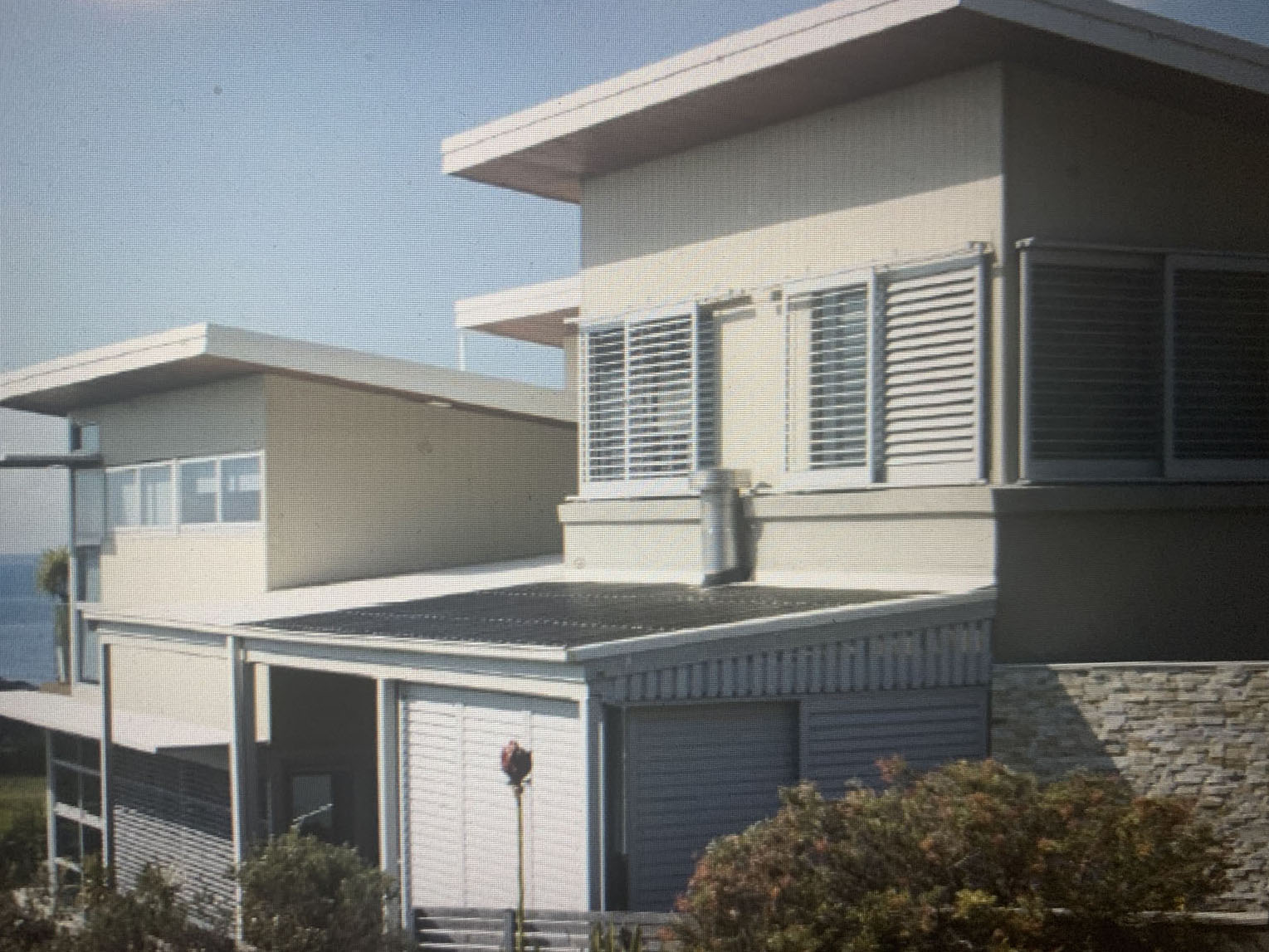
To encourage the supply of long-term rental accommodation, the NSW Government has sought feedback on possible changes to the planning policy for short-term rentals Submissions are now being considered.
The possibility that guests would pay a levy which would help to fund social and affordable housing has been accepted by the two market leaders, Airbnb and Expedia (who own Stayz, HomeAway and Wotif), as long as the tax would be applied to all tourism accommodation including hotels. The Tourism Industry Council, however, has called on the Government to remove all restrictions including the cap on the number of days properties can be used as short term rentals in any year. In Greater Sydney it is limited to 180 days a year. It is possible to overestimate the effect short term accommodation has on housing supply as in figures published in January 2024 only approximately 1% of dwellings were registered for short term letting.
DEVELOPMENT
231 Whale Beach Road, Whale Beach MOD2021/0983
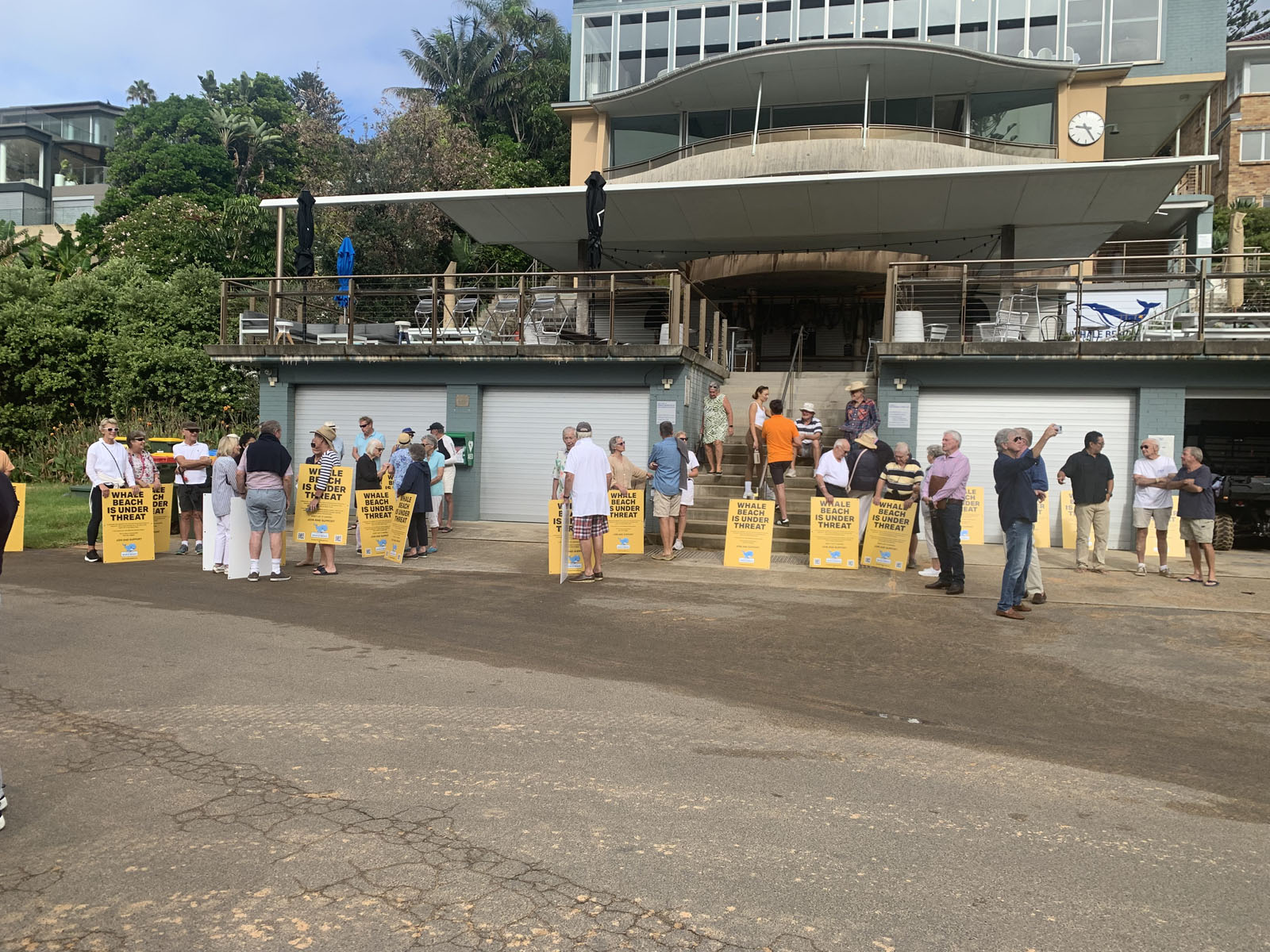
(The photograph was taken as residents were assembling since no photographs were allowed as The Court was sitting)
100-150 residents attended the Land & Environment Court Hearing on site on Tuesday, 19 March. There were several speakers, including Dr. Richard West, for the Association, and local residents all objecting vigorously to the Modification to increase the number of patrons allowed in the proposed coffee shop/restaurant. Parking is in short supply at weekends and holiday times or when functions are held at the nearby Surf Club and Moby Dicks and large functions already have most unwelcome repercussions for residents living nearby. The Commissioner and officials then adjourned to deliberate and the decision will be handed down in due course.
’The Joey’, 1191&1193 Barrenjoey Road, Palm Beach MOD2023/0684
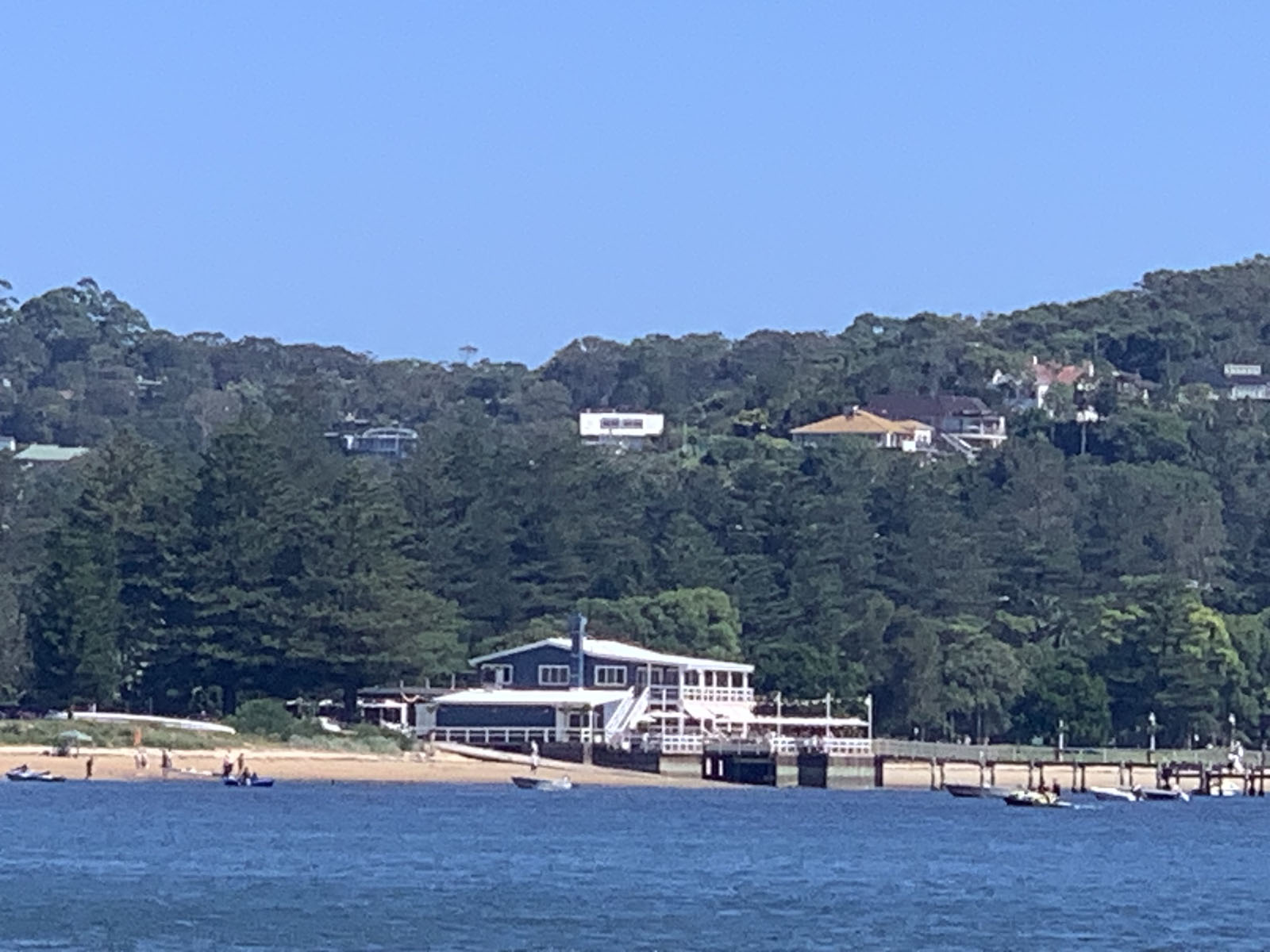
Northern Beaches Council Development Determination Panel met on 13 March 2024 to consider the Modification to Development Consent DA2021/0669 to extend the opening hours. The Panel refused the application on the grounds that it is not of minimal environmental impact, with the following Particulars:
The increase in operating hours and the inevitable increase in functions, noise, traffic and other amenity issues resulting from these extended hours does not meet the requirement to be of minimal environmental impact. The proposed increase in operating hours is likely to result in unreasonable amenity impacts to nearby residential properties. No acoustic testing has been undertaken during functions since the recent re-opening of the venue. The testing in the Acoustic report submitted with the application occurred, in part, during Covid lockdowns.
Minutes of the Meeting of the Panel can be accessed on:
https://files-preprod-d9.northernbeaches.nsw.gov.au/nbc-prod-files/media/files/2024-03/Minutes%20-%20Development%20Determination%20Panel%20-%2020240313.pdf?1711188260
173-175 Whale Beach Road, Whale Beach DA2023/0607
This development application was lodged for the subdivision of two lots into three and the construction of three dwelling houses each with swimming pools. The applicant applied to the Land & Environment Court after deemed refusal by Northern Beaches Council and the application was passed by the Court despite breaches of planning controls. The Association made a submission expressing our concerns.
TRAFFIC AND PARKING
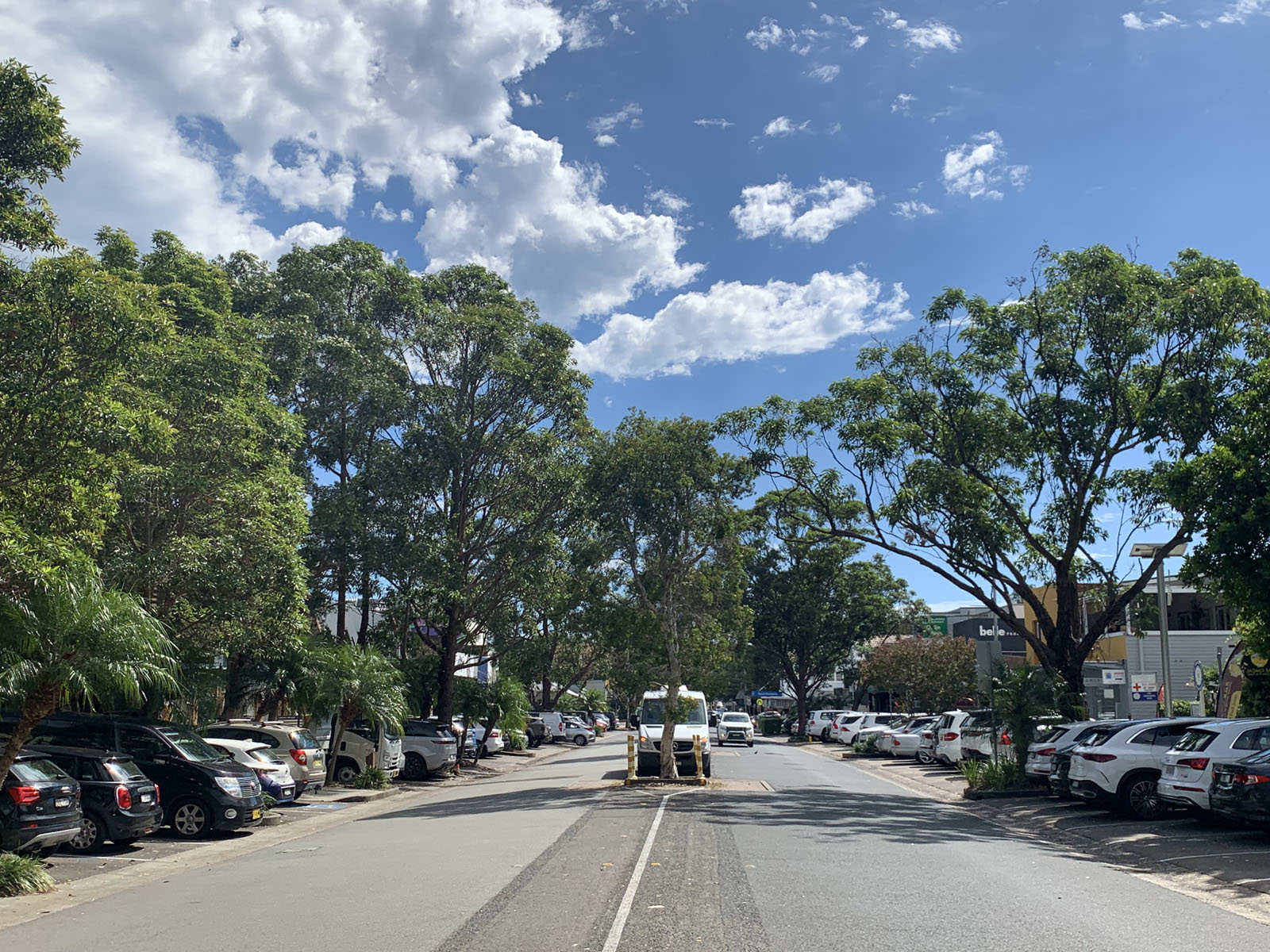
Old Barrenjoey Road, Avalon Beach
Parking tickets will no longer be issued on paper by Northern Beaches Council. From 1 March the Council has notified parking infringements by post or email. Councillors were not involved in this decision. It was an administrative decision governed by cost and staff resources helped by the fact that dockets were sometimes removed so people were unaware of the infringement.
The decision has produced a mixed reaction and there has been sufficient outcry for the NSW Government to put a halt to other Councils making the same decisions. Moreover, the NSW Finance Minister, Courtney Houssos, has requested that Councils who have decided to issue ticketless parking fines enhance the parking fine process so that drivers are provided immediate, written notification at the time they are issued with a parking fine (possibly a card or note). This answers a major concern that residents could receive multiple parking infringements before they are even aware of the first fine.
Pittwater Ward Councillor Michael Gencher has lodged a notice of motion for the meeting of Northern Beaches Council to be held on Tuesday 26 March demanding the system be withdrawn.
You can register your own feelings on the Council website where you will also find the parking rules: northernbeaches.nsw.gov.au/services/parking/parking-rules
JOLT CHARGER IN PITTWATER PARK (S)
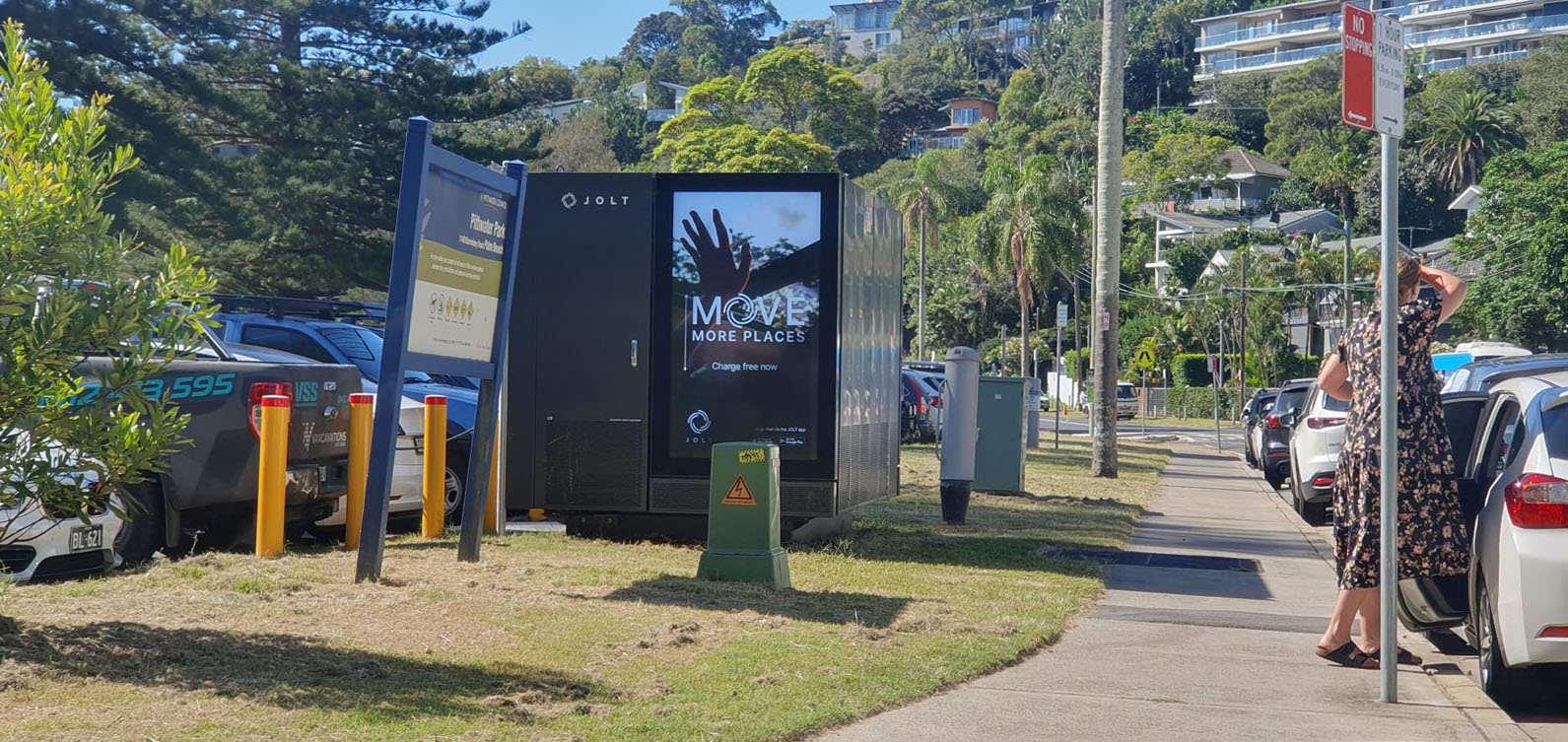
The electric vehicle charging station has been installed in Pittwater Park. It is rather larger and more obtrusive that we anticipated! The smaller and less powerful charger which had been scheduled to be installed in Governor Phillip Park cannot proceed due to load limit issues.
ENVIRONMENT
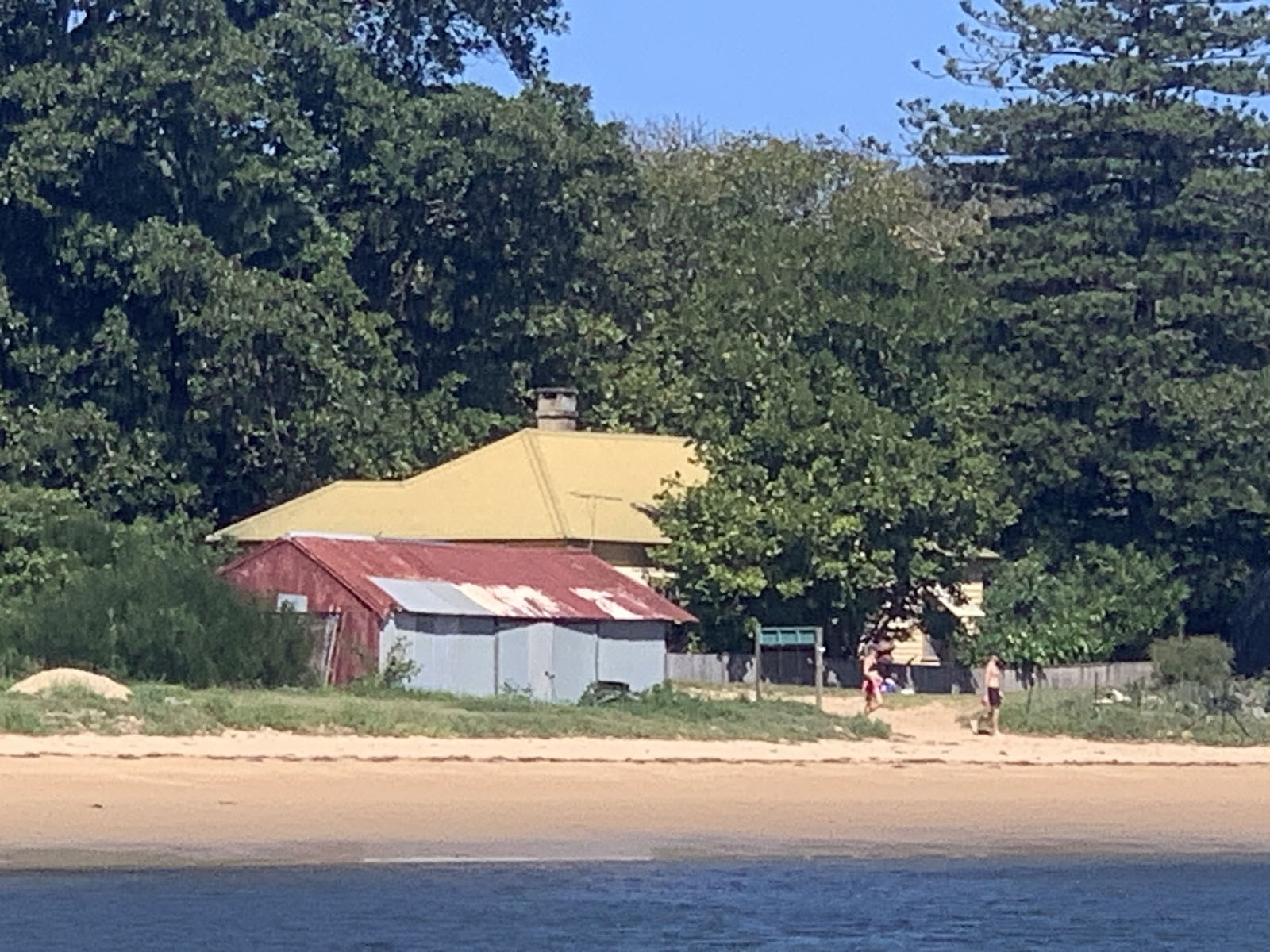
The Boatman’s Cottage and the Red Shed, Station Beach
PETROLEUM EXPLORATION PERMIT (PEP 11)
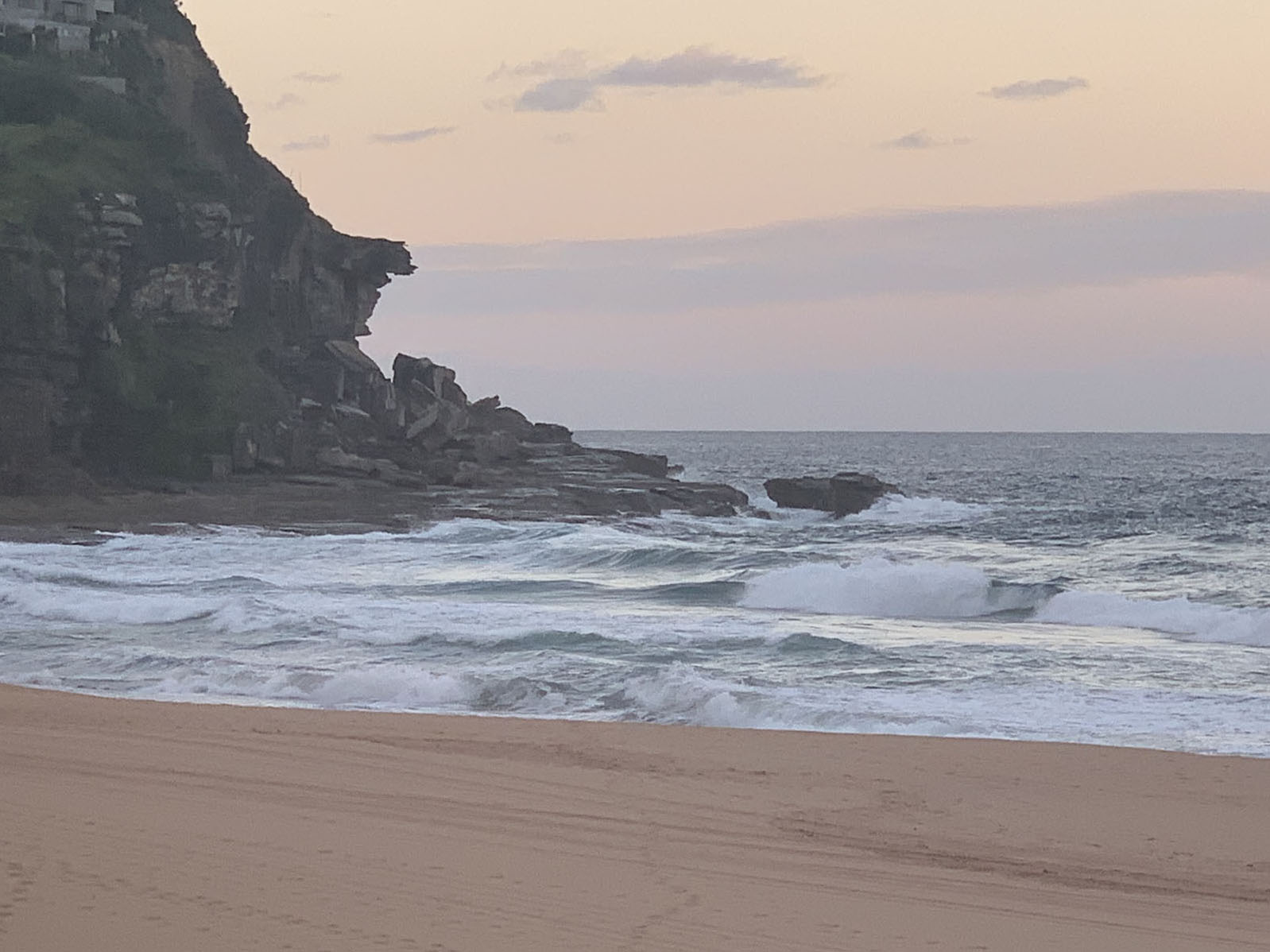
Ocean off Whale Beach
The NSW Government has introduced legislation to ban offshore oil and gas exploration off the Northern Beaches coastline and this has now passed. Debate over the future of the licence has been divisive since it was first raised in Federal Parliament by Jason Falinski supported by Zali Steggall. The initiative now rests with the Federal Government to implement a similar ban in Australian territorial waters.
DOG ATTACKS AT NORTH PALM BEACH
 The photograph shows an injured turtle which was mauled by an off-leash dog in the sandhills on the ocean side north of North Palm Beach Surf Life Saving Club. It was rescued by Andrew Gregory, a local nature photographer and WIRES Powerful Owl helper. He had recently also rescued a fairy penguin and the (protected) black snake from dog attacks.
The photograph shows an injured turtle which was mauled by an off-leash dog in the sandhills on the ocean side north of North Palm Beach Surf Life Saving Club. It was rescued by Andrew Gregory, a local nature photographer and WIRES Powerful Owl helper. He had recently also rescued a fairy penguin and the (protected) black snake from dog attacks.
Please ensure that your dogs are on leash and under control and be aware that the Rangers are back on the beat.
NORTHERN BEACHES COUNCIL
MARTIN MCCALLUM
At its meeting on 27 February, 2024, the Council acknowledged the wonderful contribution made by Martin McCallum, sending its condolences to his family and resolving to work with them, the PBWBA and the Barrenjoey Alliance for Arts and Culture to find a fitting tribute that recognises his long-standing contribution to our community.
OCEAN POOLS
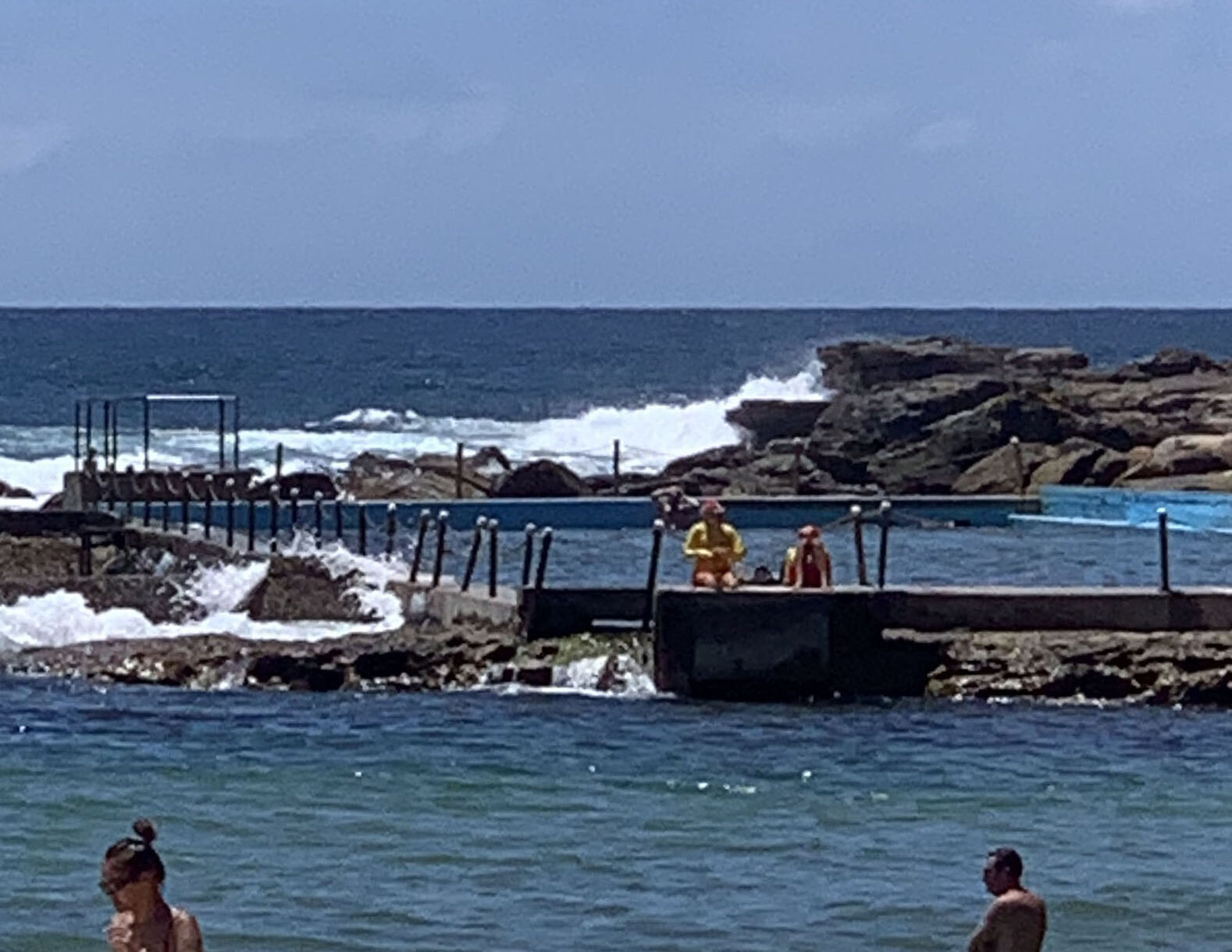
Palm Beach Ocean Pool
Ocean Pools are a feature of beach life and none have more character than the 15 Ocean Pools on the Northern Beaches even though there are one hundred of them along the coast of NSW. The first one in NSW was built by convicts under the command of James Morisset in Newcastle, the Bogey Hole, in 1819. The two oldest on the Northern Beaches are Palm Beach built by members of the Surf Life Saving Club and Freshwater which cost 472 pounds, both built in the early 1920s. Throughout the 1800s it was illegal to swim on Sydney beaches during the day because it was felt unseemly to be seen in little or no clothing. People could only swim in the early morning and late evening and men and women could never (officially) swim together. Things have moved on a little!
Miranda Korzy with Kristyn Glanville raised the subject of Pittwater and Narrabeen Pools at the February Council meeting and asked for a briefing on their condition.
However, an amendment by Michael Gencher and Vincent De Luca and passed by the Council widened this asking for a briefing on costs, scope and timing of the following:
Condition of all rockpools on the Northern Beaches Their cleaning and maintenance regimes Safety measures in place Budgets for maintenance Visitor numbers Possible ways of including the Ocean Pools in a wider conservation strategy
Miranda Korzy emphasised the safety implications of the leaks in the Palm Beach Pool and it is hoped that this will be addressed urgently. Whale Beach Pool also needs considerable work.
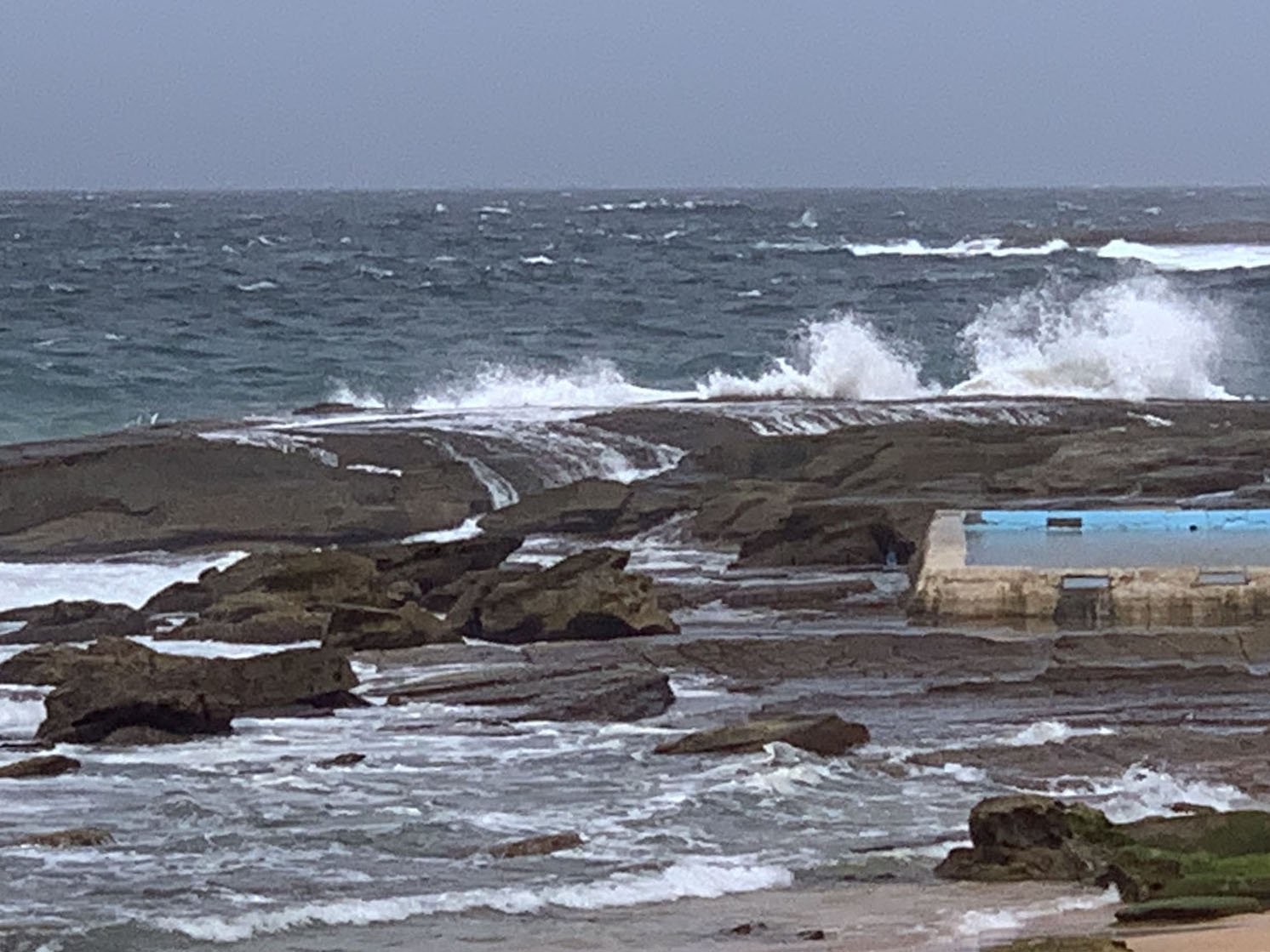
Whale Beach Ocean Pool
AVALON SHARED SPACE
The period of consultation over the Shared Space Trial in Avalon concluded on 28 February and the submissions are now being assessed before a report is presented to Councillors with a recommendation. Should this proceed as a permanent feature there will be further consultation with residents on how it should be set out.
COMMITTEE MEMBERS FOR PBWBA
The workload on members of the PBWBA Committee has increased considerably over the last few years as more and more consequential legislation, policy documents and development applications have been put forward which require analysis and possibly a detailed submission. Do we have any Association members with specific expertise and experience in, namely, legal, accounting, architecture/planning, communications/social media who would be willing to join the Committee and actively contribute? If you do not feel that you want a substantial commitment but are willing to help in other ways please let us know. If you are interested please contact us at info@pbwba.org.au
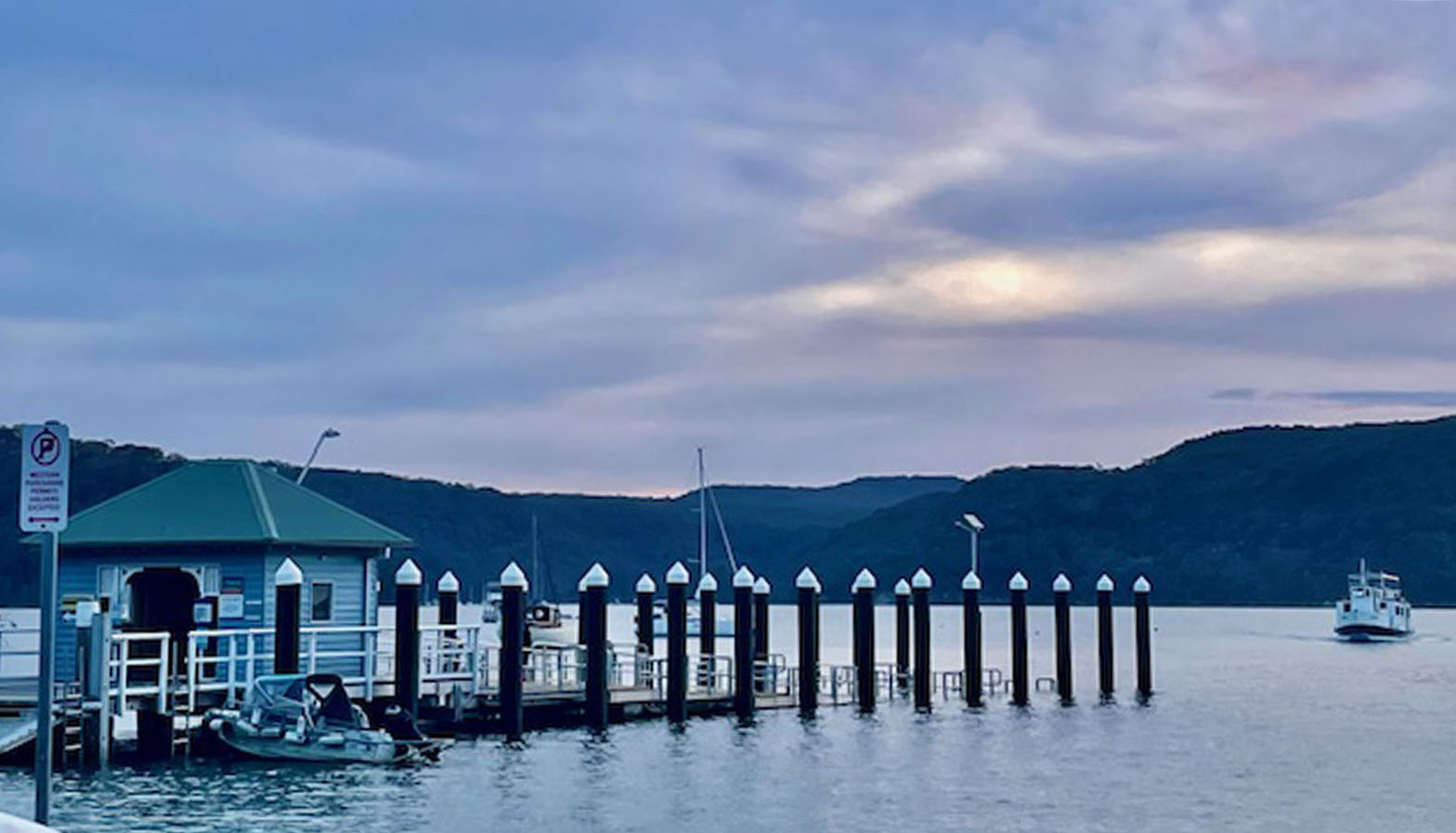
Palm Beach Jetty (Courtesy Leonor Gouldthorpe)
HISTORY CORNER by Robert Mackinnon
The Many Lives of Governor Arthur Phillip: Part 1
There aren’t many paintings or engravings of Arthur Phillip. And those in existence exhibit a certain sameness – that of a serious man with a dour expression, older looking than his age might reveal but with a penetrating look, his head slightly angled, hinting at an enquiring mind and a sharp intellect. Indeed, Phillip was anything but the archetypal naval man or staid bureaucrat one might imagine. Before coming to Australia, he’d lived a full and colourful life, kaleidoscopically so, one that might have seen lesser men wishing to slow down for a quieter life, reaching for a comfortable chair, a pipe and pair of slippers. But not the redoubtable Phillip.
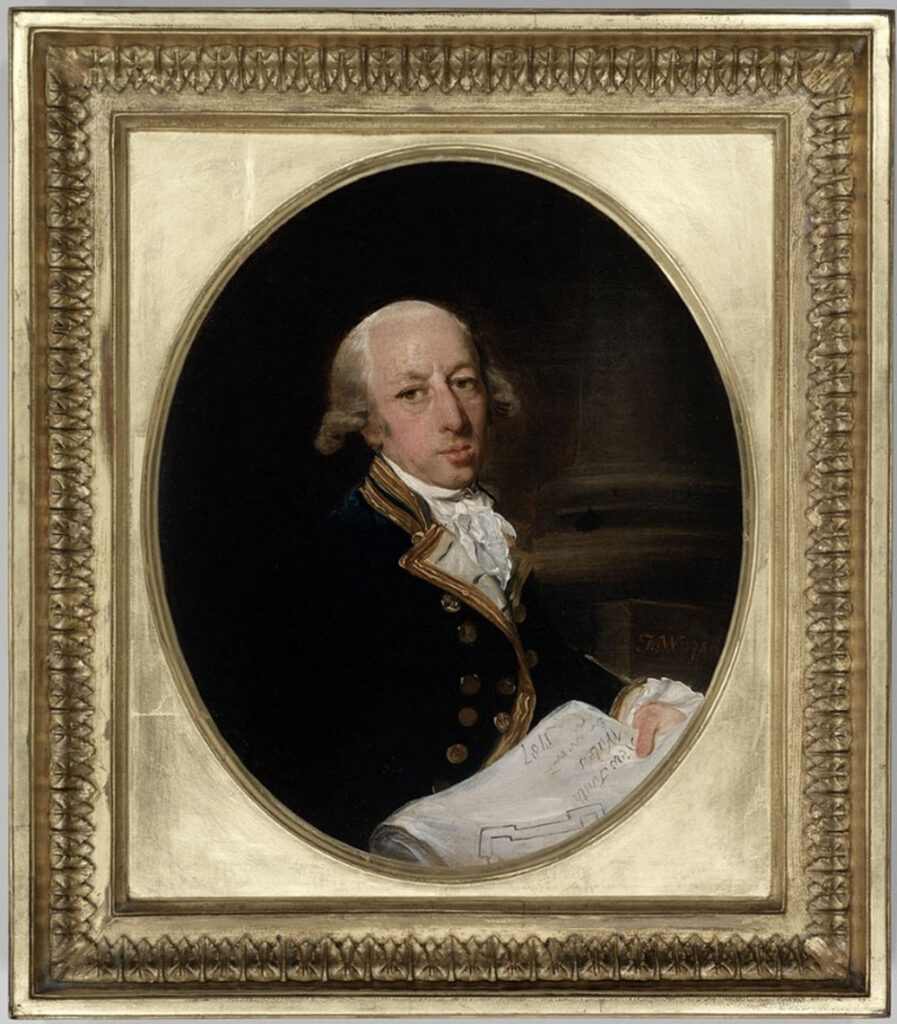
Captain Arthur Philip c. 1787. Painted by Francis Wheatley. From the collection State Library of New South Wales
There’s an inextricable link between Phillip and the PBWBA. Almost one hundred years ago, in 1925, the PBWBA, then the Palm Beach Progress Association, proposed that the well-known strip of land that runs north of Beach Road between Pittwater and the Tasman Sea, be dedicated as a public park. Doing so would spare it from subdivision, a plan first put forth in 1923. The Association also suggested a name – Governor Phillip Park.
When the First Fleet sailed into Port Jackson, Phillip was 49 years of age and considered by some to be too old to tackle the challenges that lay before him. And their concerns were well founded. According to Britain’s Office of National Statistics (ons.gov.uk), at that time life expectancy was less than 40 years. But that figure was no doubt skewed due to the then high rate of infant mortality.
Phillip’s background was unconventional. His father Jakob Phillip was a language teacher, originally from Frankfurt. Consequently, from an early age, Phillip was trilingual with fluency in English, German and French. His mother Elizabeth was widowed, having been married to Captain Herbert of the Royal Navy. Being from a family of modest means, Phillip’s schooling prepared him for a life at sea, likely through the influence of his mother. His education was at the confusingly named Royal Hospital School at Greenwich. Established in 1712, its reputation was as an illustrious place of learning for those aspiring to naval life.
By the age of 15, Phillip was an apprentice on board the Fortune, engaged in whaling and trading activities, including travelling within the Arctic Circle with all its associated privations. But with the British drums of war beating in 1755, 17-year-old Phillip, like others with military ambition, joined the navy and became a crewmember on HMS Buckingham, a gun ship. Curiously, another sailor, also linked to Australia, had joined the navy too. His name was James Cook, 10 years Phillip’s senior.
As a naval man, Phillip participated in the Seven Years War (1756-63). A complicated affair, it was ostensibly a tussle over Silesia, an area in the southern part of present day Poland, prized for its farmland and mineral deposits, including coal. Aligned on one side were France, Austria, Saxony, Sweden and Russia. Opposing them were Prussia, Hanover and Great Britain. But it was also a de facto contest between Britain and France over territories in North America and India. Key outcomes of the war were France’s concession to Britain of all North American territory east of the Mississippi, other than New Orleans and its environs, and Prussia’s retention of Silesia.
Notably, Phillip was involved in the taking of Havana from Spain in 1762. He sailed back to England in the Infanta, renamed from Infante, one of twelve vessels captured from the Spanish. Phillip’s actions saw him promoted to Fourth Lieutenant and he received £234 as his share of booty taken from the Spanish, a common practice at the time.
For over ten years, Phillip lived what appeared to be a civilian life which included a period of six years of marriage some of which were spent as a ‘gentlemen farmer’all on half pay from the navy.
But the sea was calling. Through his connections, in 1775 at the age of 36, he was able to return to it as a Captain in the Portuguese Navy. Historian Michael Pembroke characterises Phillip’s time with the Portuguese as akin to being a mercenary and notes that the Captain’s commission he earned was double that of Portuguese officers.
Portugal, a longstanding ally of Britain, was in conflict with Spain over territory in South America, a matter that had deep roots. The voyages of Christopher Columbus had provided new opportunities for European nations to exploit. But squabbles over land required the intervention in 1494 of Pope Alexander VI who determined that the western half of South America should go to Spain and the eastern to Portugal. As is often the case with arbitrary delineations, arguments followed.
During the war against Spain, Phillip spent time in Rio de Janeiro and became fluent in Portuguese. Also, through his experiences as this time, it’s thought that he also picked up Spanish, thus gaining proficiency in five languages. Granted the San Agustin, a Spanish warship captured by the Portuguese, he became its Captain and used it to make detailed charts of Rio’s harbour and the coast of Colonia, present day Uruguay. Later, the Rio chart, which he retained, proved useful to him when he returned in 1787 with the First Fleet.
Re-entering the Royal Navy in 1778, Phillip rose through the ranks from Lieutenant to Captain and extraordinarily in 1784 began work as a spy in France, reporting on their naval activities at Toulon. His cover apparently was that he was on leave from the Admiralty to deal with his private affairs. However, Pembroke claims it wasn’t Phillip’s first foray into espionage in France and that he’d probably done so on at least three occasions since 1769.
But after almost two years in France, Phillip faced a new challenge. On 12th October 1786, the Admiralty selected him to lead that great British experiment to the far side of the world, the venture for which he’s best known. Thereafter, he spent much of his time meticulously planning the voyage. His hard work paid off. Most historians agree Phillip did an outstanding job overseeing the safe passage of around 1,400 people actual numbers vary in the historical records to the Antipodes in just over eight months. Leaving Portsmouth on Sunday 13th May 1787, all eleven ships of the fleet sailed into Port Jackson on 26th January 1788. Surgeon John White, supported by eight Assistant Surgeons including William Balmain and George Worgan, ensured passengers and crew were healthy. Just 48 lives were lost, a very low attrition rate (3.4%) for the time. Indeed, the second fleet of 1790, privatised by the government, had a convict death rate of 40%. However, it’s not possible to make like for like comparisons as the second fleet statistics include the journey and an unspecified number of months immediately afterwards.
Fresh supplies were obtained at various stops along the way including Tenerife and Rio de Janeiro, with Cape Town the last port visited. There, after protracted negotiations with the Dutch authorities, a varied cargo was loaded. It included grain, seeds, plants, water and more than 500 animals ranging from chickens and geese through to pigs and horses. Remarkably, despite the need to carry out repairs during the journey, all the vessels arrived intact. But unexpected challenges were to come after they set up camp and tried to establish a settlement.
So, by the age of 49, Phillip had been involved in whaling in the Arctic, fought in the Seven Years War the major conflict of the time, been paid to captain a Portuguese navy vessel arguably as a mercenary, enjoyed the booty of conflict, spied on France and now had successfully transported eleven ships to the new world. In future newsletters we’ll cover Phillip’s experience with farming, how his determination led to the discovery of the Hawkesbury and the ongoing difficulties he had in dealing with Aboriginal people.
FORTHCOMING EVENTS/DATES FOR YOUR DIARY
- Market on the Green, Avalon Bowlo, Sunday 1 April 11am-5pm
- Next Committee Meeting, Monday 8 April, 7pm at Pacific Club
- Next Coffee Morning, Monday 29 April, 10.30am at Pacific Club AGM, Tuesday 14 May, 7pm a Club Palm Beach
- Christmas Party, Sunday 8 December 2024at Dunes, Governor Phillip Park
Please do not hesitate to contact PBWBA with any questions, concerns or thoughts.
Email: info@pbwba.org.au
Prof Richard West AM 0407 942 941

